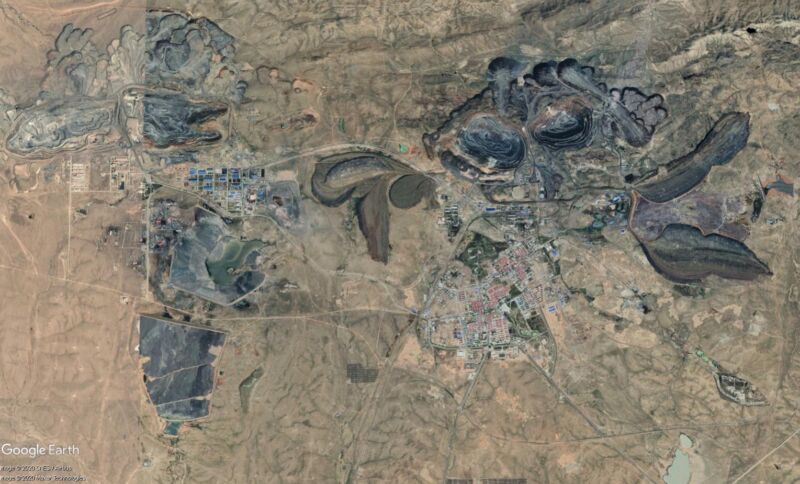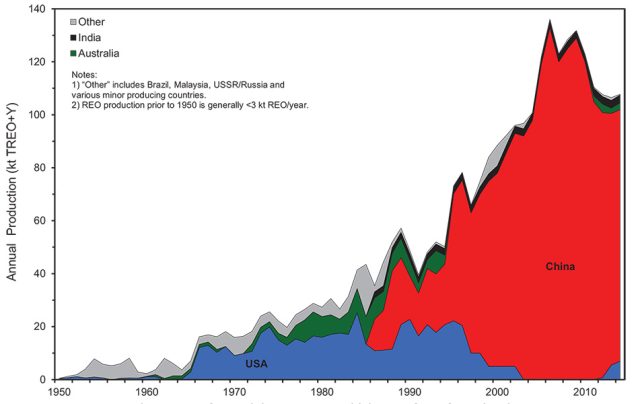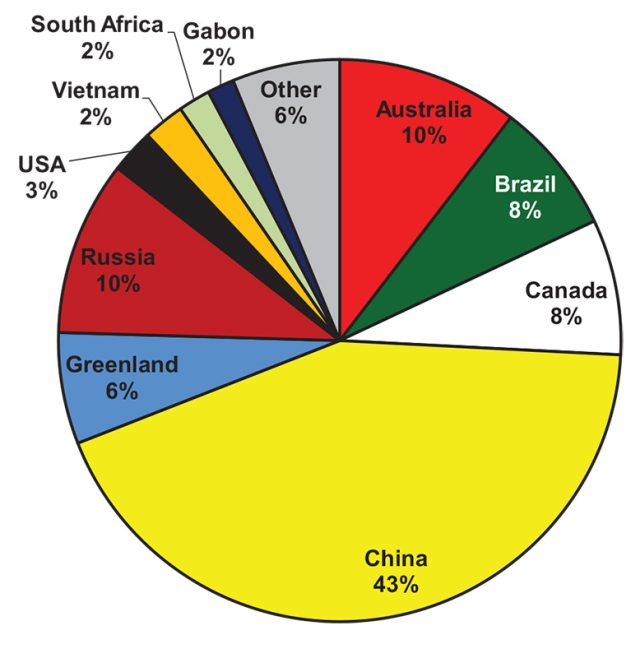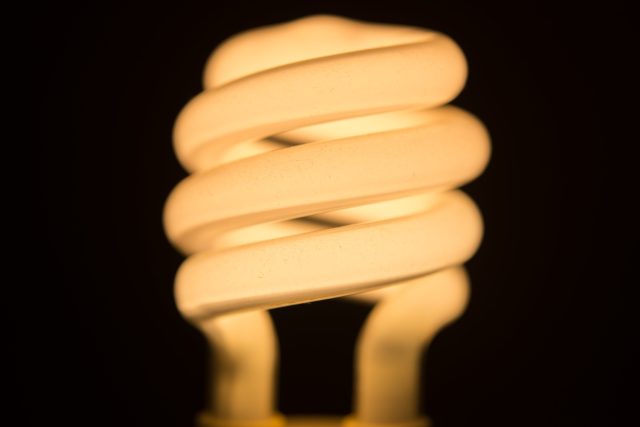
The transition to electric vehicles and renewable sources of electricity, now gaining serious momentum, is largely about dispensing with fossil fuels. But in order to end our reliance on those substances, we need a growing supply of other materials—things like lithium and rare earth elements. Unlike fossil fuels, however, these materials need not be consumed when we put them to use. In principle, devices can be recycled at end of life to return these precious materials to a closed loop that could eventually minimize the need for mining.
But with solar arrays, wind turbines, and electric vehicles starting to hit the disposal stage in increasing numbers—while manufacturing skyrockets—is a new recycling industry actually ramping up to take advantage? The answer is “not really” for reasons both familiar and novel. A lot of heavy lifting remains between here and a closed loop for clean energy technologes.
I prefer my earths medium rare
The so-called “rare earth elements” (or REEs) include the 15 lanthanide elements on the periodic table—lanthanum through lutetium—plus scandium and yttrium straight above them. Despite the name, most of the rare earths are more common than gold or silver in the Earth’s crust, although high-quality ores are indeed hard to come by.
The REEs do, however, confer minorly miraculous properties to electronics and energy tech. Neodymium or samarium in magnets, for example, greatly increases their potency, allowing those components to shrink in size. Rare earths are also used to create the phosphor coatings inside fluorescent light bulbs that are responsible for the color of light emitted. And they’re important for lasers, optics, nickel-metal-hydride batteries—even chemical catalysts for oil refining. For one reason or another, REEs find their way into phones, electric vehicles, solar panels, and wind turbines.

They’re not alone, of course. Wind, solar, and vehicles also rely on steel, copper, aluminum, quartz, lithium, nickel, and cobalt, among other things. Steel, copper, and aluminum already pretty mature recycling industries, so long as these components are collected from the disposal stream. And the lithium supply chain currently gets a lot of attention, from increased mining to battery recycling (which manufacturers are keenly interested in). In contrast, REEs have mainly been discussed in geopolitical terms, since China is responsible for the lion’s share of mining and processing.
Recycling is, in a way, an even more attractive proposition for rare earths than for lithium because of what’s known as the “balance problem.” While you can visit the cereal aisle and select only the cereals you want, rare earth mining means buying the whole aisle. Some of the rare earth elements are much more in demand than others, but the ratios found in ores bear no resemblance to their relative popularity. Looking at the lanthanide series on the periodic table, the elements used most today are found in the middle—neodymium and dysprosium, for example. Most ores, on the other hand, are enriched with one end of the series or the other. They also often contain radioactive thorium and uranium, adding another layer of complexity for mining operations to contend with.
It could be that other elements gain favor in the future, but at least for now, there’s an advantage to getting your rare earths by recycling materials that already contain the mix you want. Otherwise, as demand for dysprosium increases, you could be stuck producing ten times that amount in lanthanum just to get the dysprosium you want.
S’more ore?
Ores with high concentrations of rare earths mostly fall into two general categories: igneous rocks and weathered sediments. The igneous ores are mostly carbonatite—an unusual product of magmas rich in carbonate minerals. It’s unusual enough that there’s only one volcano in the world erupting carbonatite lavas today, although others have in the past.
Something like half of current global rare earth element production comes from China’s Bayan Obo mine alone, which features many carbonatites. Southern California’s Mountain Pass mine along Interstate 15 has exploited similar rocks over its on-again-off-again history.
Australia’s Mount Weld straddles the two categories of rock and sediment. The ultimate source of REEs is carbonatite rock, but current mining is focused on the soil and sediment on top of this rock. That soft stuff is the result of weathering that has broken down the bedrock, carrying away some of the less resilient minerals and further concentrating the rare-earth-rich ones. Similar processes are responsible for deposits of ionic clays in China and of mineral sands in India.
The different sources have different ratios of rare earth elements in them.
“In general, all carbonatites are enriched in lanthanum and cerium,” UNLV’s Simon Jowitt told Ars. “So as you go from lanthanum down towards lutetium, basically the concentrations drop off sharply. In the ionic clays, it's the other way around; you get far less lights and far more heavies. But what we actually want is some of the stuff in the middle.”
China has dominated production and processing (much of the ore mined elsewhere is still processed in China), although there are many other potential sources. When China attempted to throttle exports amid growing demand in 2011, spiking prices led to a scramble to open new mines. A World Trade Organization ruling in 2014 put an end to China’s restrictions, and together with increased production in other countries and efforts by manufacturers to reduce demand, this re-stabilized the market. But work on new projects has still crept forward, even if some won’t be economical until prices rise again.
Russia, Canada, Brazil, Greenland, and the US all host significant untapped deposits. In the US, for example, there’s the Bear Lodge Project in Wyoming, the Bokan-Dotson Ridge Project in Alaska, and Round Top in Texas—all in the early stages of development. And following on the recent US-China trade war, the US government has pursued funding domestic processing plants in addition to those mines.

But it’s not just brand new mines under consideration. Some mines producing other metals have tailings—busted up waste rock—that are full of rare earths. India’s mineral sands mines, for example, have generally targeted things like titanium while putting the rare-earth-bearing minerals to one side. Stenkampskraal in South Africa and Mary Kathleen in Australia similarly have piles left over from uranium and thorium operations.
“There's the kind of core carbonatite deposits,” Jowitt said. “And then there's the sort of ‘well these could be interesting if the economics are right…’ And that's both different types of primary deposits, as well as some of the secondary stuff—the kind of stuff that people aren't interested in now, but if the prices are right, and waste piles are still there, they may be extractable in the future.”
Reprocessing these stockpiles could be a win-win, as such tailings are often left to leach dangerous substances when exposed to the elements. An economic incentive could get them cleaned up rather than abandoned.
REE-cycle
That brings us back to a different REE source: recycling in in-demand rare earths from the products that already contain them. Jowitt led a 2018 paper on the current state of play (and future potential) of rare earths recycling. Despite the obvious value of keeping this material in circulation, barely one percent of rare earths in use are getting recycled today.
That mostly comes from magnets, fluorescent light bulbs, and nickel metal hydride batteries—as well as easily recyclable chemical catalysts used in industry, which are a separate case. Each requires unique processing techniques, but they illustrate the challenges that need to be overcome.

The first problem—common to all forms of recycling—is collection. There may be be a lot of devices out there containing rare earths, but they have to end up at the right recycling plant to matter. Because fluorescent light bulbs are hazardous when disposed of improperly, people are a little better about handing them off at collection points. And big things like permanent magnets in vehicles or wind turbines have greater odds because they’re generally deconstructed in industrial workflows. These components are not so reliant on millions of individual consumers a) knowing what to do and b) actually doing it.
Electronics suffer more from the collection problem, as it can be genuinely difficult for people to find out where they can drop off e-waste for responsible recycling. As a result, only about 20 percent of e-waste is being recycled.
But electronics also face another problem: they don’t necessarily contain enough rare earths to make recycling those elements profitable. A small number of components may have REEs, and even those may only contain trace amounts, and it’s a lot of work to separate out those components. And since the manufacturers usually aren’t the ones running the recycling operation, it might not even be clear which components contain what material. There is a significant total amount of rare earths in electronic devices out in the wild, but you’d have to go through a lot of stuff to find it all.
Things like permanent magnets and nickel-metal hydride batteries contain a few percent up to 10 percent rare earths. Fluorescent bulb phosphors are even richer. In contrast, rare earths only account for about 0.7 percent of the metal in an iPhone, according to Apple.
Finally, the efficiency of the recycling process itself limits progress. Whether you’ve got a bunch of magnets or a pile of fluorescent bulbs, the whole endeavor hinges on how inexpensively and purely the rare earths can be separated from the iron, glass, and other materials they’re tied up in. Any way you do it, recycling can take a lot of energy or some expensive chemistry, which limits potential profits.
For example, devices might first be crushed, allowing the components to be physically separated by material to some extent. Powerful magnets could pull out the iron-containing pieces, while metals like aluminum and copper are separated from plastic bits through the clever use of magnetic fields and conveyor belts. But once the easy stuff is done, pieces composed of mixed materials require more thorough separation techniques.
One method is to completely dissolve materials in strong acids and then separate them by careful precipitation reactions. Another common approach is to simply melt everything down, burning off combustible materials as if they were fuels (and emitting some nasty fumes). By continuing to heat in a low-oxygen environment, you can get down to clean metal alloys—that will still need to be separated into individual metals in a later heating step (if they have different melting points) or with acids. The process isn't perfect, either, and some valuable elements may be stuck in the rocky slag that gets left behind.
Even within the current economic and technological constraints, a lot more rare earths could be recycled. A 2013 study estimated that a big (but plausible) boost to the collection rate of batteries, bulbs, and magnets could raise rare earths recycling from one percent up to 20-40 percent on its own, generating several hundred million dollars in rare earths each year by now.
Even at those numbers, recycling would produce something like three to five percent of global mine production. For comparison, US mine production is about 12 percent of the global output—and roughly equivalent to the total amount of rare earths in batteries, bulbs, and magnets that are tossed out each year.
What next?
Of course, as the use of rare earths in products continues to increase, the amount contained in items reaching end-of-life will also increase, so recycling can produce more and more over time.
And Jowitt certainly doesn’t see a recycling rate of 20 or 40 percent as the upper limit. “I think we could do much better,” he said. “And I think that it may not come down to economics, it may come down to people's choices. That's what's driving things like electric vehicles that right now are still more expensive than petrol-driven vehicles.”
Still, there are ways to improve the economics and grease the skids for that kind of change. Research into better and more efficient processing techniques could make a big difference, for one. Even when the rare earths are separated from the surrounding materials, they can be tricky to separate from each other because of their similarities. So some recent developments have focused on chemical methods to more easily split them up element by element.
Another thing that would help—particularly with fiddly electronics—is better design for recyclability from the manufacturers. “If we think about the way things are designed, it's designed to enhance usage. It's not designed to think about things at the end of the life of a product,” Jowitt said.
If it were easier to disassemble a device and separate the components into different recycling streams, recyclers could skip brute-force tactics like shredding devices and sifting through the pieces. That requires manufacturers to have an intrinsic incentive to consider recycling from the design phase onward. The EU has long had laws of this kind. Its Waste of Electrical and Electronic Equipment (WEEE, no exclamation point at the end) rules require sellers to offer free e-waste collection, and they require manufacturers to finance or perform the recycling.
Other regulations could simply apply to specific activities like scrapping cars, requiring vehicle batteries and electric motors to be processed separately in case some are tempted to just send the whole thing to be melted down for steel.
“If your government puts a lot of strategic value in those rare earths and wants them kept within the US, and actually to develop a domestic way of producing them by recycling, then that's something [where] government could actually start to invest in research and development,” Jowitt said, noting that the US Department of Energy and the Department of Defense have done just that.
As with other materials, the sustainability of rare earths requires an “all of the above” kind of approach. Manufacturers can be smarter about how they use rare earth elements and about designing products for ease of recycling. Recyclers can work out smarter methods to recover rare earths from devices at lower cost. And policy incentives or cooperative corporate agreements can encourage solutions to the logistical problems that prevent consumers from sending all their old devices to recyclers. These are all doable things. They just aren’t going to magically happen without commitment.
"behind" - Google News
July 21, 2020 at 06:00PM
https://ift.tt/2BmDDlc
Are we ready to recycle the “rare earths” behind an energy revolution? - Ars Technica
"behind" - Google News
https://ift.tt/2YqUhZP
https://ift.tt/2yko4c8
Bagikan Berita Ini














0 Response to "Are we ready to recycle the “rare earths” behind an energy revolution? - Ars Technica"
Post a Comment